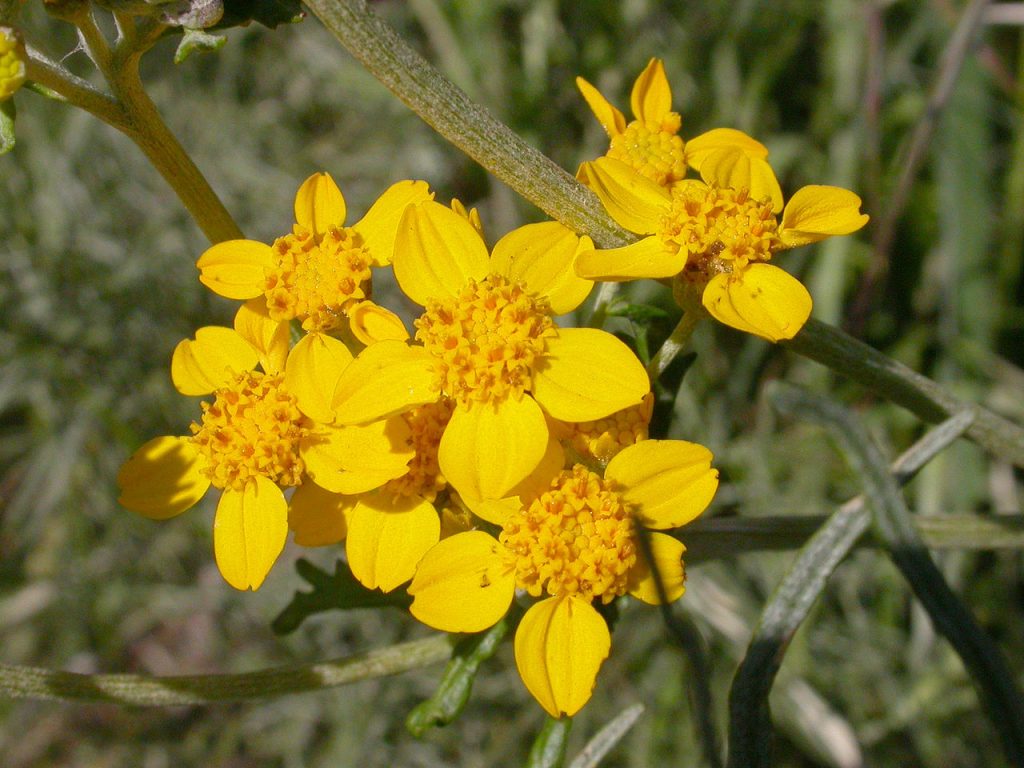
Native to California and Baja California, this variable annual, perennial or subshrub, is a member of the aster family, Asteraceae, that also includes sunflower, daisy and lettuce. It usually grows 1-2′ tall and forms a greenish to gray-green clump or stand of erect stems and deeply 4-5 lobed or divided leaves. From winter to summer, terminal clusters of up to 30 bright golden yellow flower heads appear. Each flower head is flat, about 3/8 ” across and consists of a few rounded to oval ray florets surrounding a large center of disc florets. The fruit is a tiny achene with a very small pappus. The flowers are attractive to bees and other pollinators and the fine foliage adds texture to the garden but the plant is winter deciduous and may also lose leaves in the summer if stressed. The genus name, Eriophyllum, comes from the Greek words erion, meaning wool, and phyllon, meaning leaf, and refers to the woolly looking hairs on young leaves. The specific epithet, confertiflorum, comes from the Latin words confertus meaning crowded and floris meaning flower and refers to the densely packed florets in the flower head.
Type: Annual, perennial or subshrub
Bloom: Terminal clusters of up to 30 bright golden yellow flowerheads from winter to summer.
Size: .6 – 2.3′ H x 1.5′ W
Light: Full sun
Soil: Sand, dry to medium moist, well-drained
Hardiness: Zones 6-10
Care: Deadhead to extend bloom time; cut back 3-4″ after flowering to encourage bushiness
Pests and Diseases: None of significance
Propagation: Seed, cuttings
Companion Plants: Sticky monkey flower, purple sage, brittlebush
Outstanding Selections: None available
Photo Credit: Curtis Clark Wikimedia Commons